Florence - Around the City
Back to Italy 2016 Index
Galleria dell'Accademia
Uffizi Gallery
Il Duomo
Florence is the capital city of the Italian region of Tuscany. It is the most populous
city in Tuscany, with 383,083 inhabitants, expanding to over 1,520,000 in the metropolitan area.
Florence was a centre of medieval European trade and finance and one of the wealthiest cities of the time.
It is considered the birthplace of the Renaissance, and has been called "the Athens of the Middle Ages".
A turbulent political history includes periods of rule by the powerful Medici family, and numerous
religious and republican revolutions. From 1865 to 1871 the city was the capital of the then recently
established Kingdom of italy. The site was founded by the Etruscans about 200 B.C.
The only rainy day we experienced on our time in Italy was in Florence.
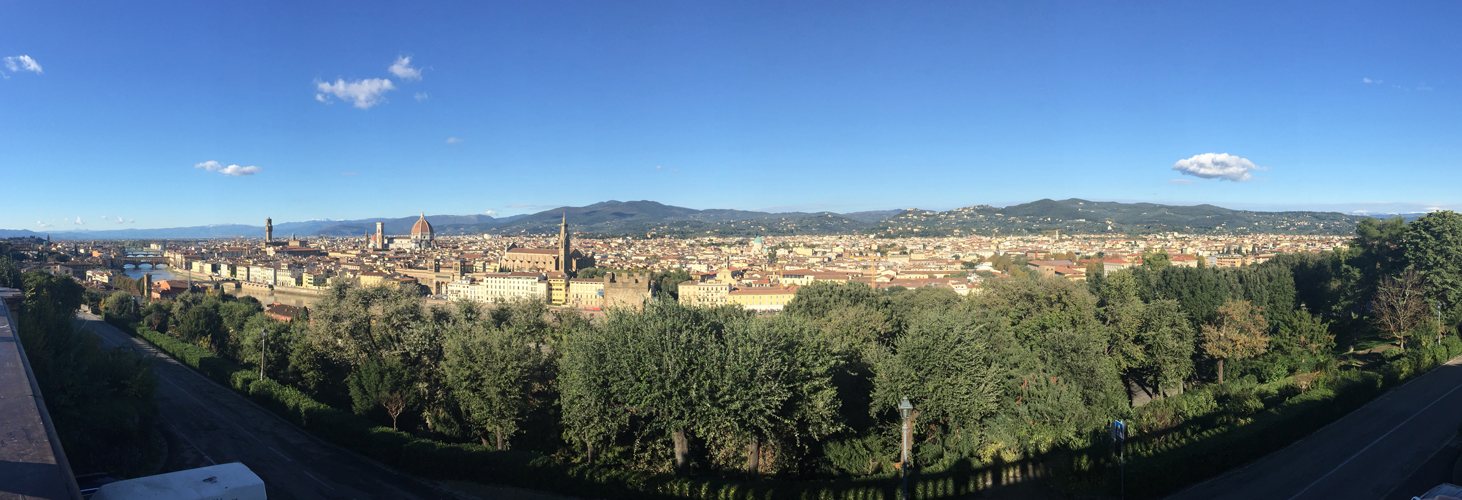 |
| Florence from Piazzale Michelangelo. |
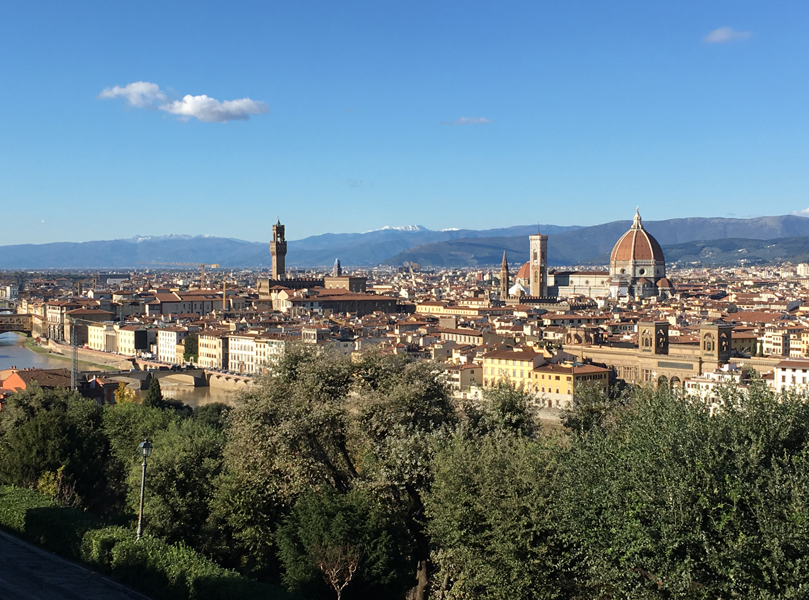 |
| On
the left, the tower of Palazzo Vecchio is one of the symbols of
Florence and it is called the tower of Arnolfo in honor of Arnolfo di
Cambio, considered the architect and designer of the ancient
palace. Next to Il Duomo, Badia Fiorentina is a 10th-century
abbey home to over 1,000 years of history. Il Duomo with
Brunelleschi’s dome and the bell tower (designed and started by Giotto,
finished by Andrea Pisano and later, by Francesco Talenti - who built the top three levels) dominate the skyline. |
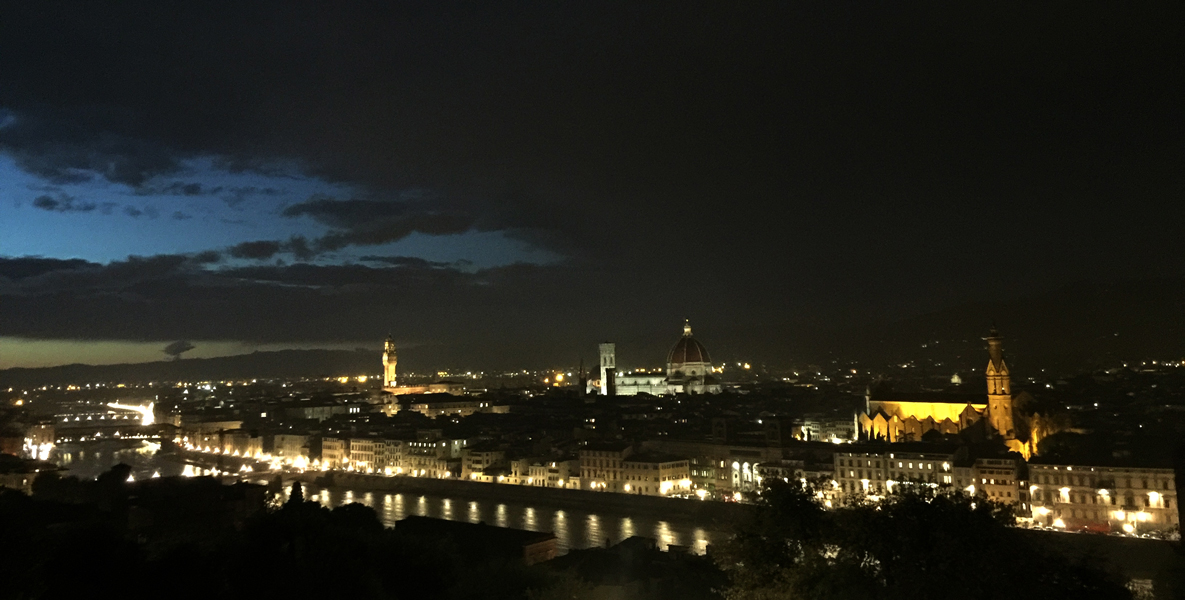 |
| Florence at night from Piazzale Michelangelo. |
Piazza della Signoria
At the heart of the city, the Piazza della Signoria houses Bartolomeo Ammanati's Fountain of Neptune (1563–1565),
which is a masterpiece of marble sculpture at the terminus of a still functioning Roman aqueduct. The Palazzo della
Signoria (also Palazzo Vecchio) - once the home of the Medicis - facing it is still home of the municipal government.
The Loggia dei Lanzi, also called the Loggia della Signoria, is effectively an open-air sculpture gallery of antique
and Renaissance art.
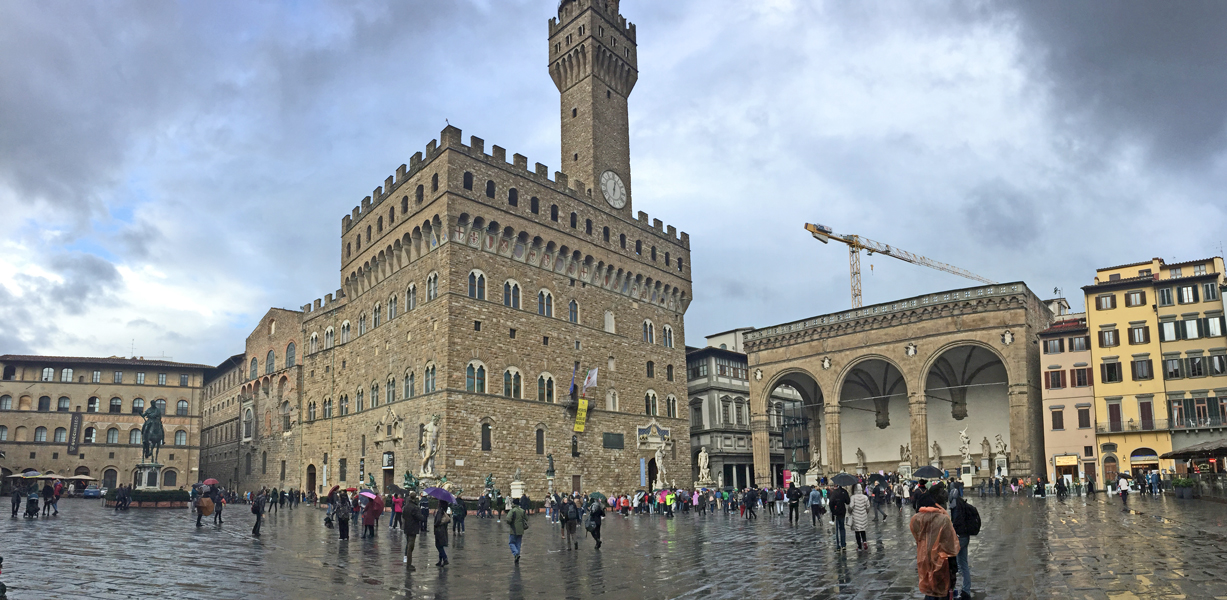 |
| The Piazza della Signoria with the equestrian statue of Cosimo
I, by the sculptor Giambologna at the left. In the center, the
Fountain of Neptune by Bartolomeo Ammannati stands at the corner of the
Palazzo Vecchio, and at the right, the Loggia dei Lanzi. The Uffizi Gallery can be seen behind the plaza. |
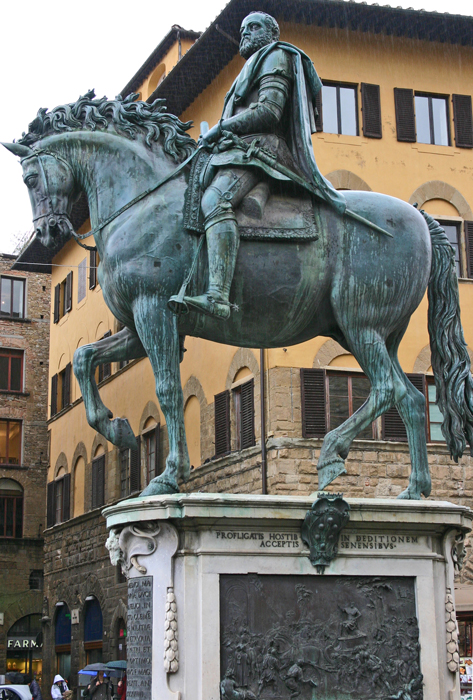 |
| The classical roman-inspired statue of Cosimo I. |
Fountain of Neptune
The Neptune figure, whose face resembles that of Cosimo I de' Medici, was meant to be an allusion to the
dominion of the Florentines over the sea. The figure stands on a high pedestal in the middle of an octagonal fountain.
The pedestal is decorated with the mythical figures of Scylla and Charybdis. The statue of Neptune is a
copy made in the nineteenth century, while the original is in the National Museum. However, when the work
was finished, it was not appreciated in particular by the Florentines, who called it Il Biancone (the white giant).
Work continued on this fountain during the next ten years. Ammannati, with the assistance of the best
Florentine sculptors and casters, added around the perimeter of the basin, in a mannerist style, suave, reclining,
bronze river gods, laughing satyrs and marble sea-horses emerging from the water. Frequent vandalism
and damage over the centuries has made it the object of several restorations and substitutions.
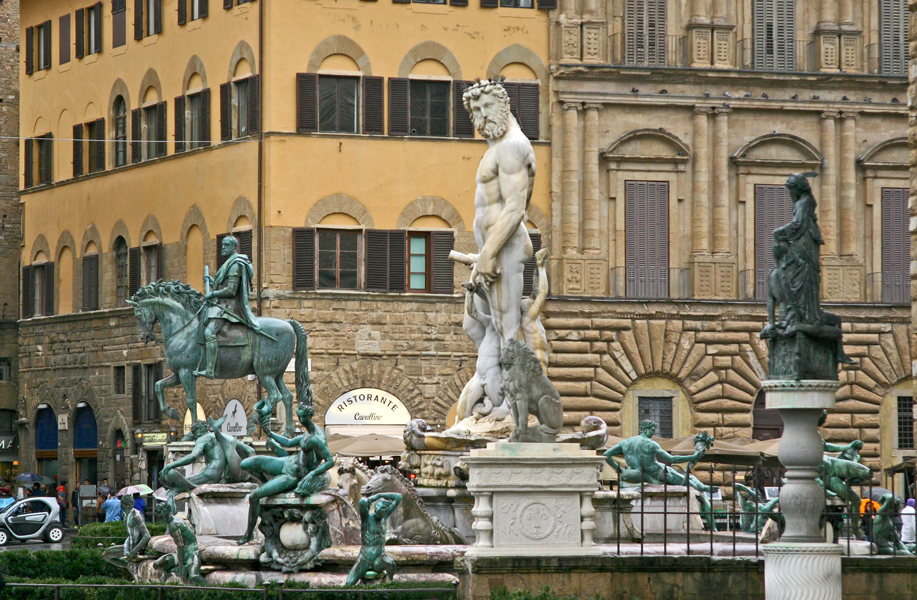 |
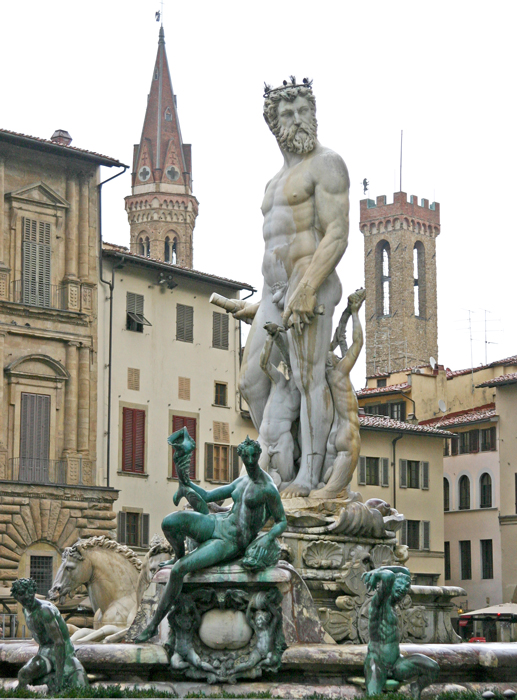 |
 |
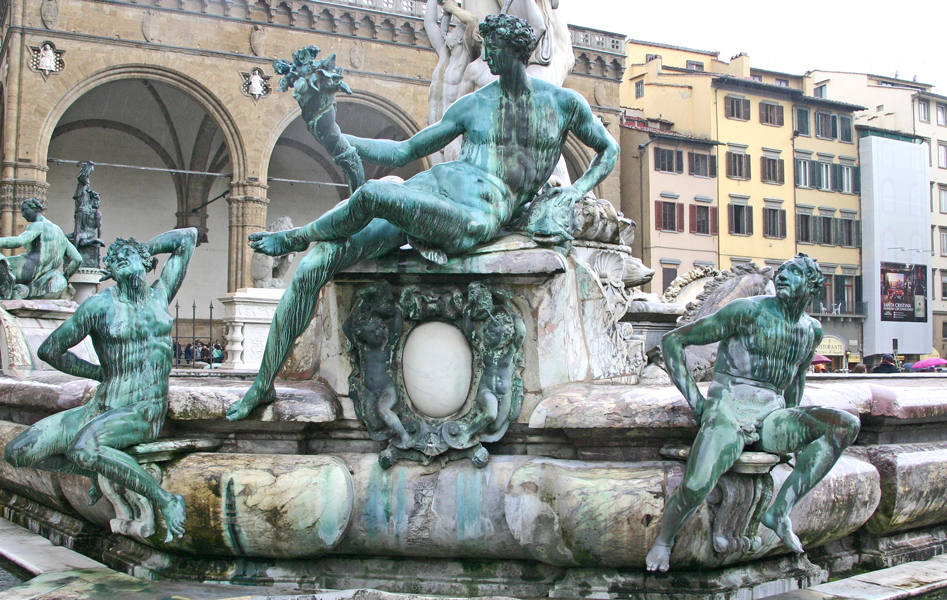 |
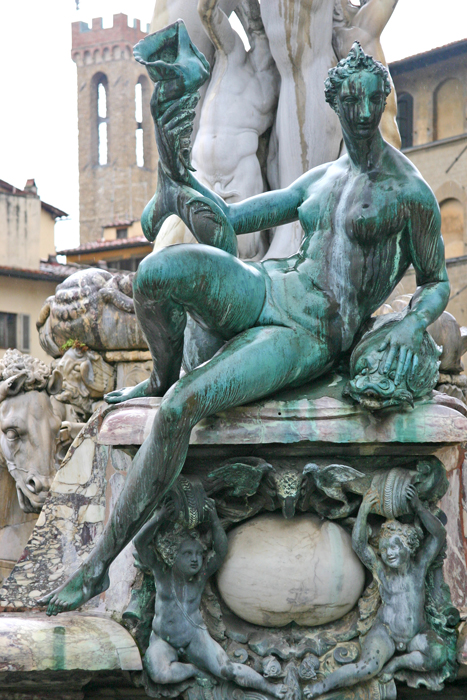 |
 |
 |
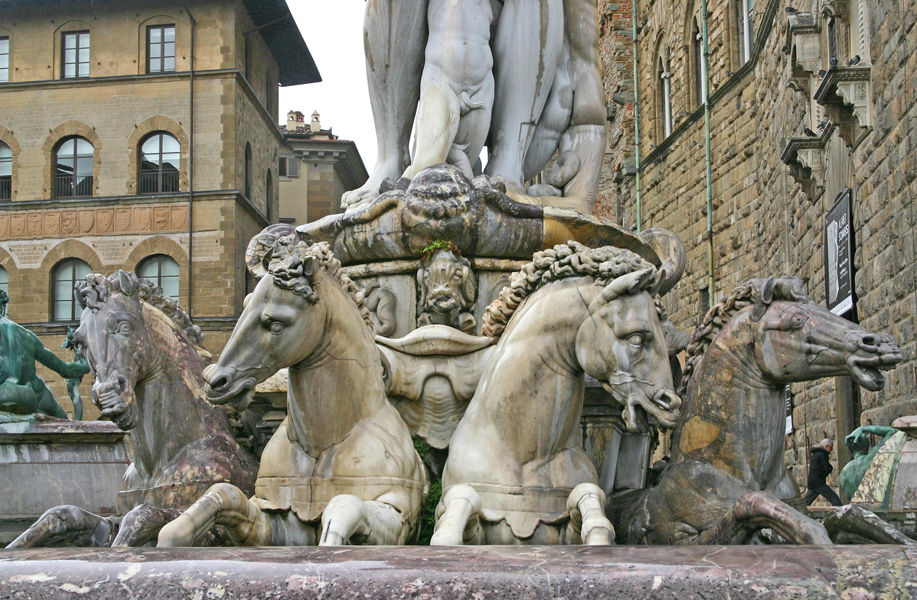 |
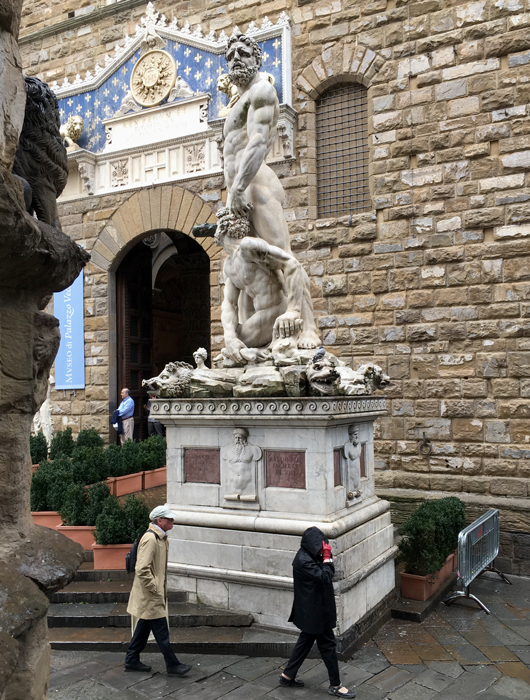 |
| Bartolommeo Bandinelli's Hercules and Cacus, in front of Palazzo Vecchio. |
The Loggia dei Lanzi
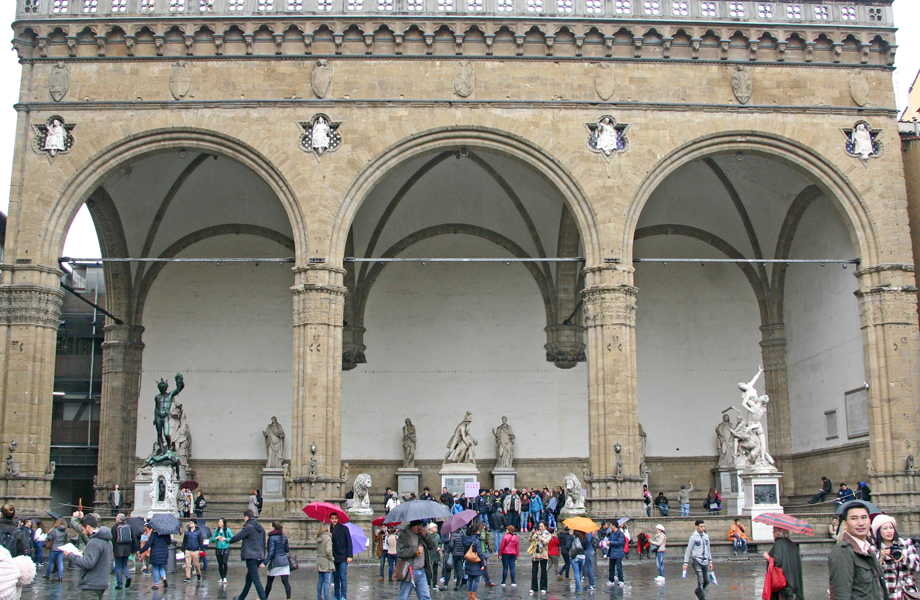 |
| The
Loggia dei Lanzi. The four facade trefoils contain the virtues
Fortitude, Temperance, Justice and Prudence, by Agnolo Gaddi. |
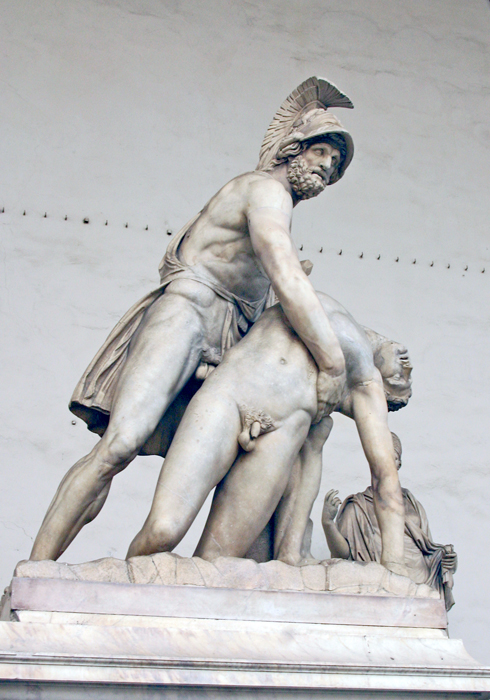 |
| Menelaus
supporting the body of Patroclus, a much-restored Roman sculpture
discovered in Rome. It stood originally at the southern end of
the Ponte Vecchio. |
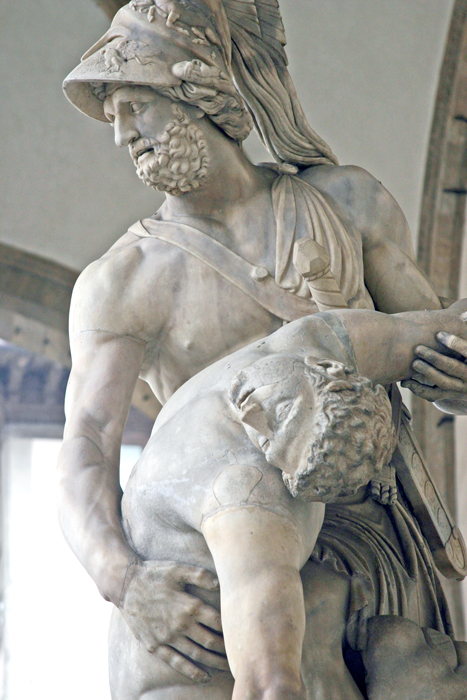 |
 |
| Giambologna's marble sculpture Hercules beating the Centaur Nessus (1599). |
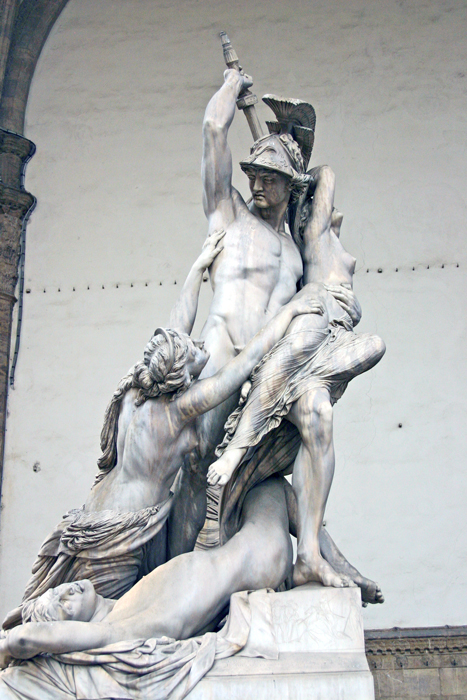 | 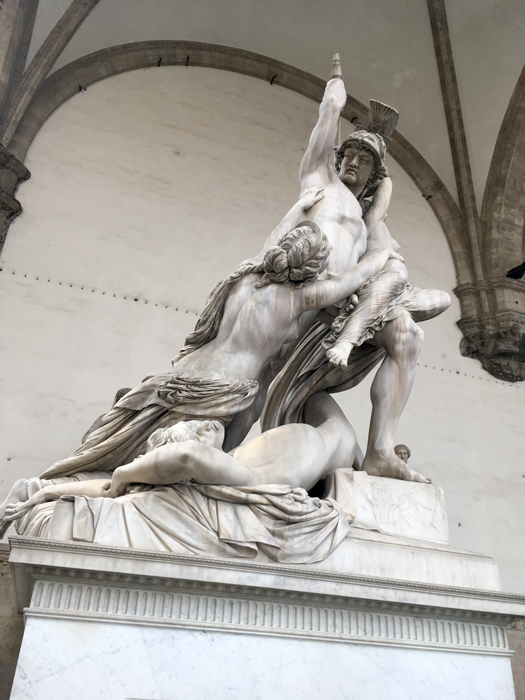 |
| The Rape of Polyxena | by Pio Fedi from 1865. |
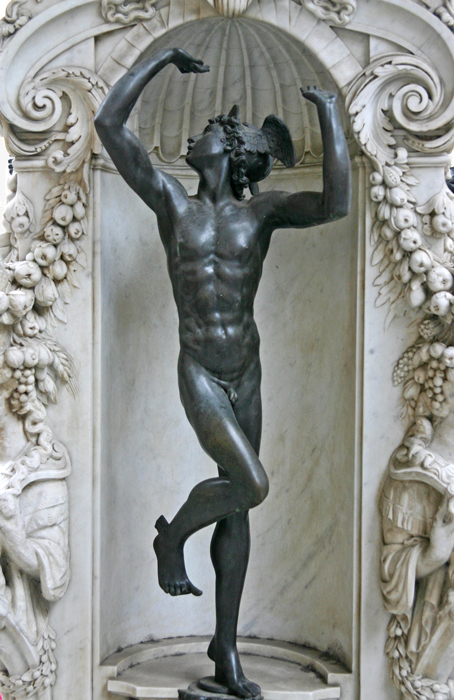 |
| This richly
decorated marble pedestal, by Cellini, shows four graceful bronze
statuettes of Jupiter, Mercurius (above), Minerva and DanaŽ. The
pedastal supports a statue of Perseus holding the head of Medusa, also
by Cellini. |
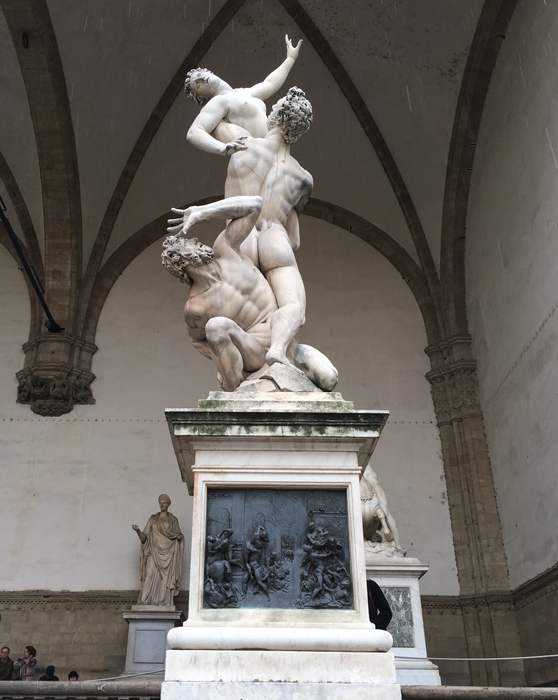 |
|
Rape of the Sabine Women by the Flemish artist Jean de Boulogne, better
known by his Italianized name Giambologna. This impressive work
was made from one imperfect block of white marble, the largest block
ever transported to Florence. This is the first group
representing more than a single figure in European sculptural history
to be conceived without a dominant viewpoint. It can be equally admired
from all sides. The marble pedestal, also by Giambologna, contains
bronze bas-reliefs with the same theme. This marble and bronze group
has been in the Loggia since 1583. |
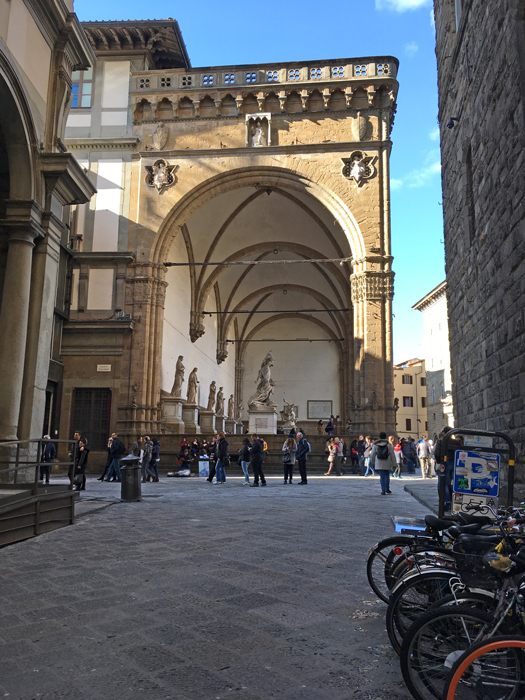 |
| View of Loggia dei Lanzi from the Street leading to the Uffizi Gallery. |
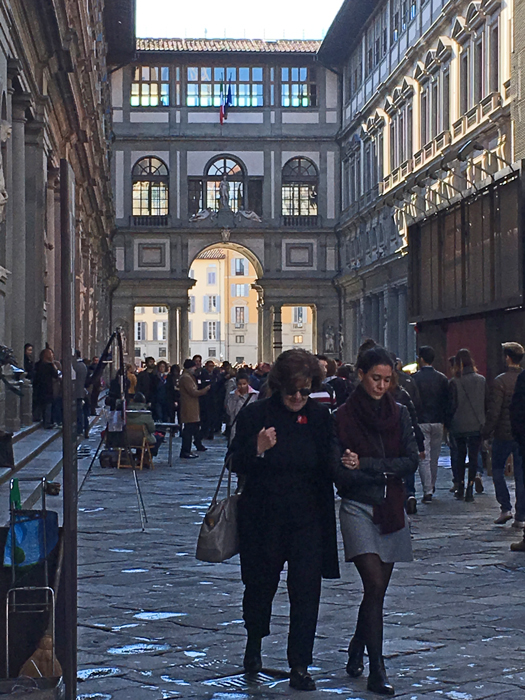 zal zal |
| Piazzle degli Uffizi. |
Basilica di Santa Croce
Situated on the Piazza di Santa Croce, the Basilica is the largest Franciscan church in the world. Legend says that
Santa Croce was founded by St. Francis himself. The construction of the current church, to replace an older building,
was begun on 12 May 1294, possibly by Arnolfo di Cambio, and paid for by some of the city's wealthiest families.
It was consecrated in 1442 by Pope Eugene IV.
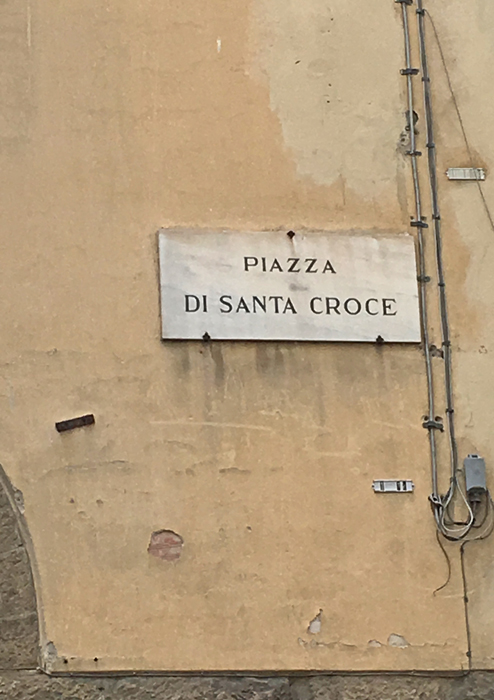 |
 |
| The plaza is empty on a rainy mid-day. |
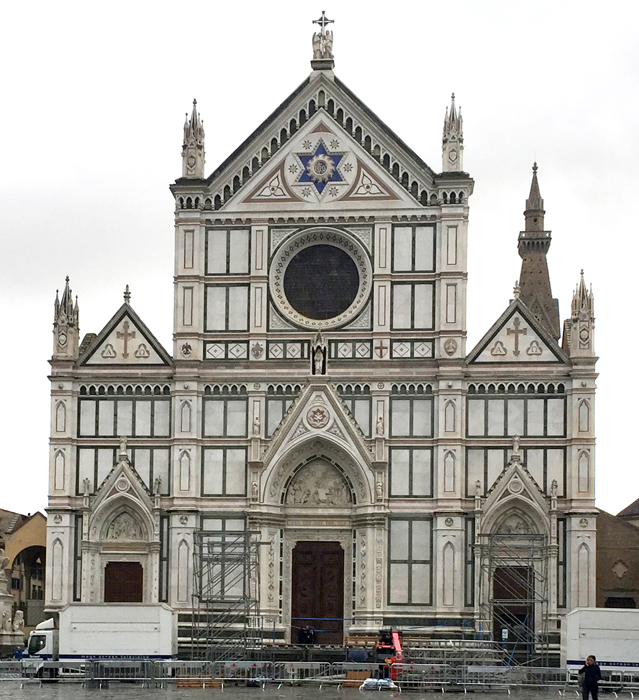 |
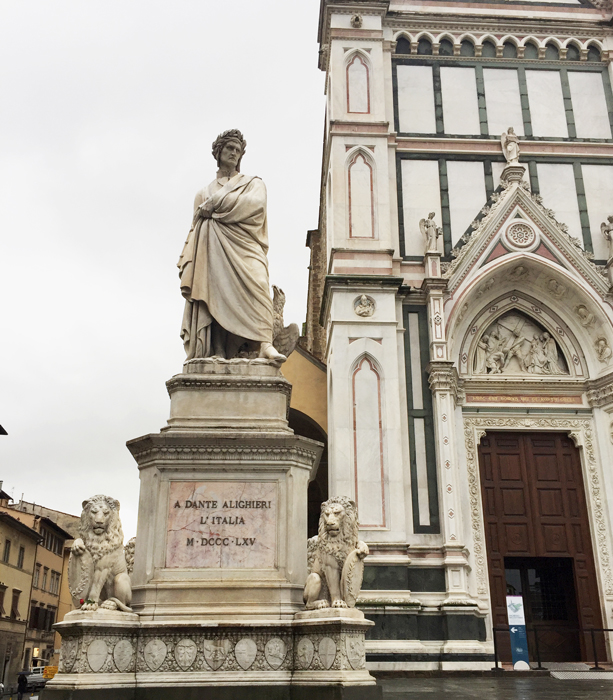 |
| Monument
to Dante, sculpted by Enrico Pazzi. Dante was born in Florence,
but later exiled under pain of death for religious and political
reasons.
In June 2008, nearly seven centuries after his death, the city council
of Florence passed a motion rescinding Dante's sentence. |
Ponte Vecchio
The Ponte Vecchio ("Old Bridge") is a medieval stone closed-spandrel segmental arch bridge over the Arno River,
noted for still having shops built along it, as was once common. Butchers initially occupied the shops; the
present tenants are jewelers, art dealers and souvenir sellers. It is the only bridge not destroyed by the Germans
as they retreated before the advance of the liberating British 8th Army in WWII.
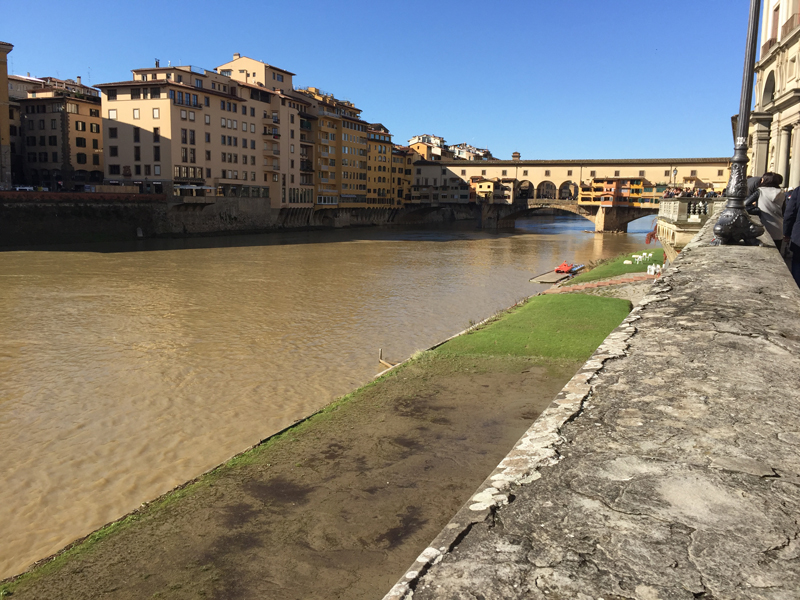 |
| Walking one or two blocks from the Uffizi Gallery to the Arno River affords this down-river view of the Ponte Vecchio. |
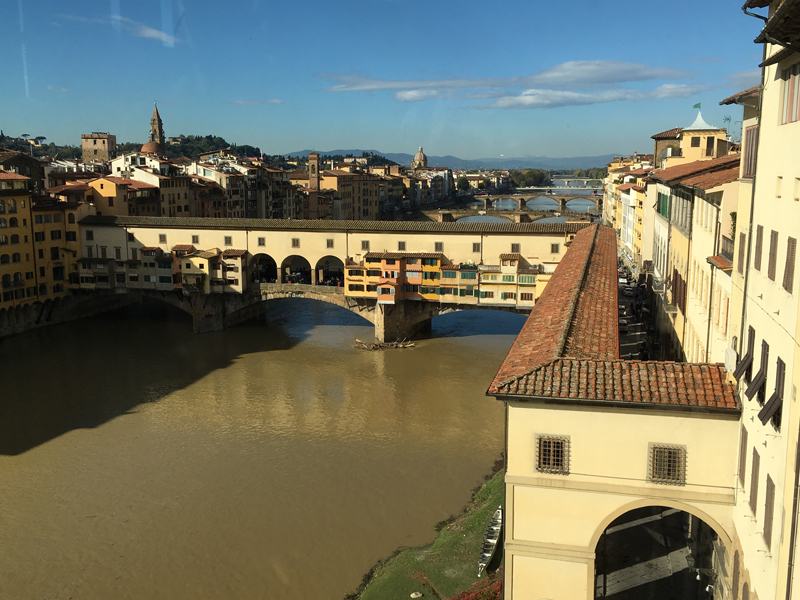 |
| The back shops that may be seen the from the east were added in the seventeenth century.
Vasari's tile-roofed Corridoio running from the Uffizi (at right)
crosses the Ponte Vecchio on its way to link with Palazzo Pitti, a
Medici residence. The bridge behind Ponte Vecchio is the Ponte
Santa Tržnita, the oldest elliptic arch bridge in the world; the three
flattened ellipses give the structure its celebrated elegant appearance. Just beyond is Ponte alla Carraia. |
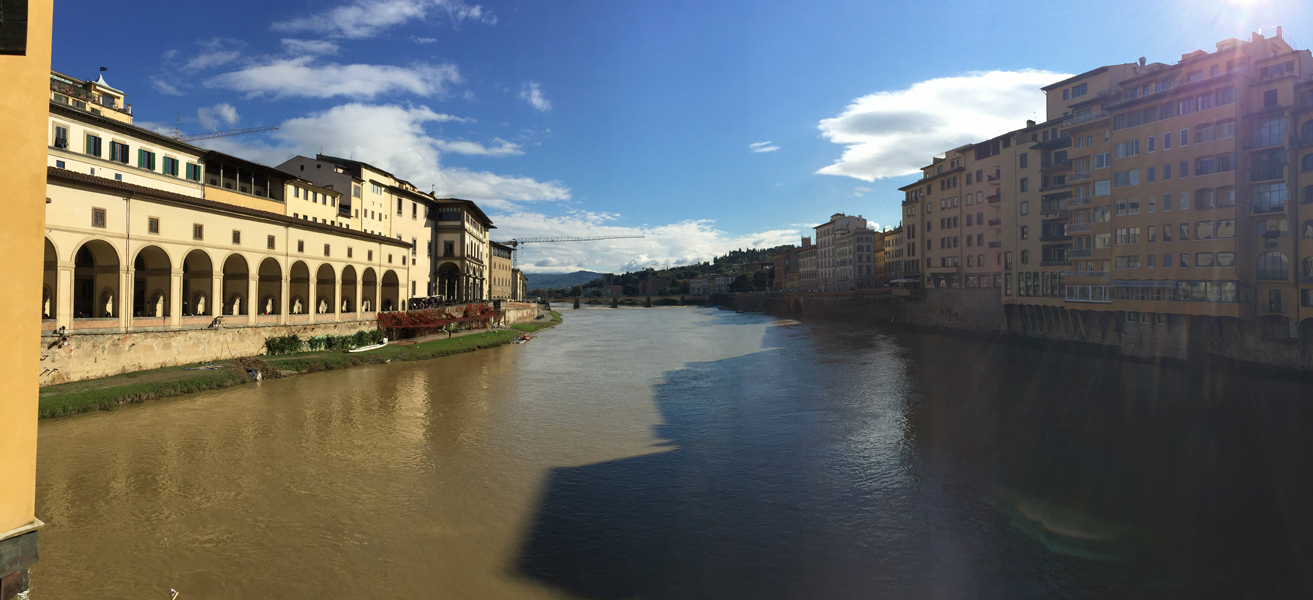 |
| View looking east from Ponte Vecchio, Corridoio on the left. |
Exploring the City
From our hotel, it is a short walk to the city center.
From there it is easy to just wander the small
side streets; surprises wait around every corner.
Everywhere one looks, there is a photo-op!
 |
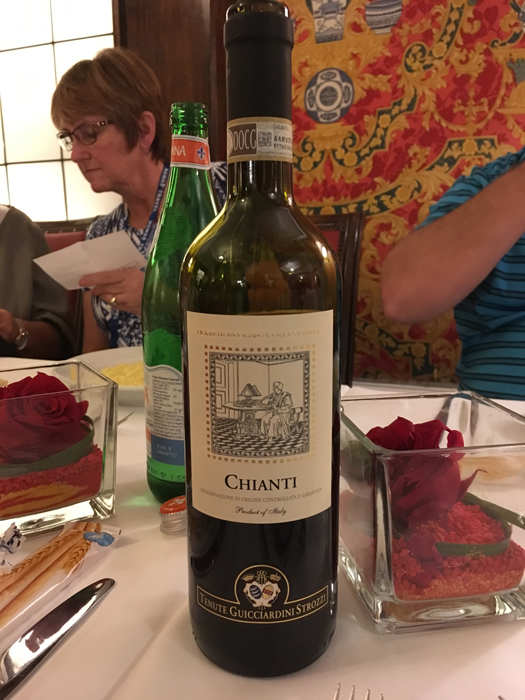 |
| Dinner at the hotel. This was typical of the places we stayed. |
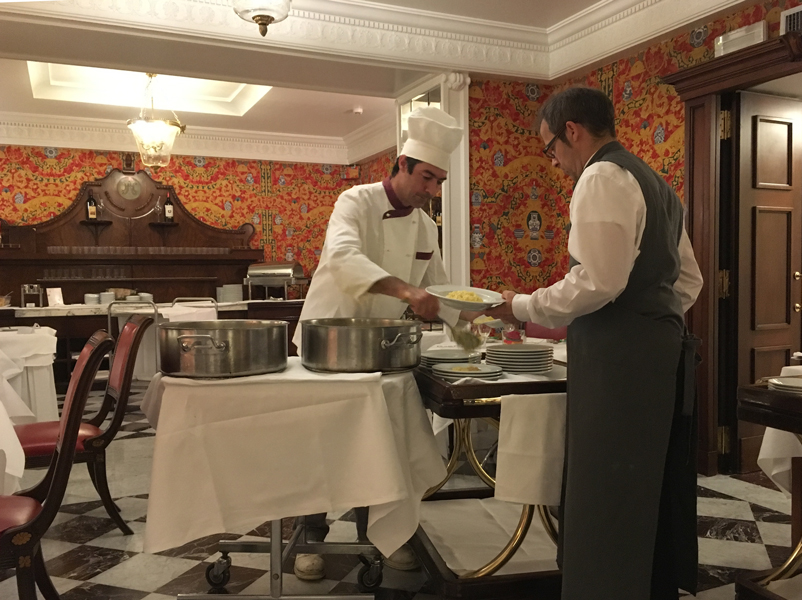 |
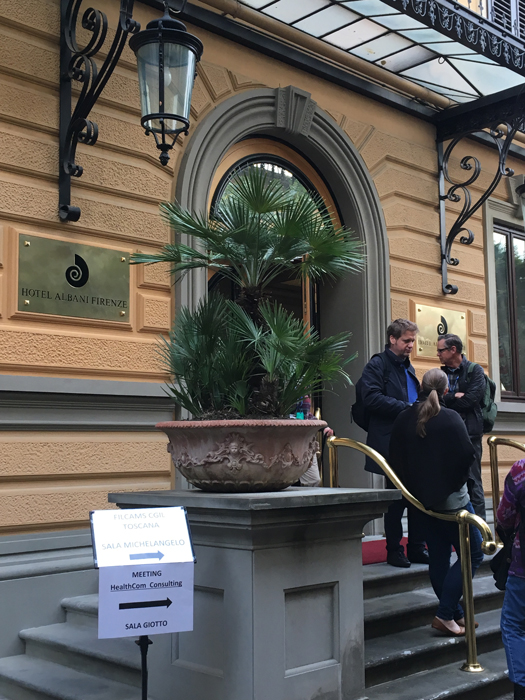
|
| Tour guide Francesco and tour leader Daniel, getting ready for the morning tour. |
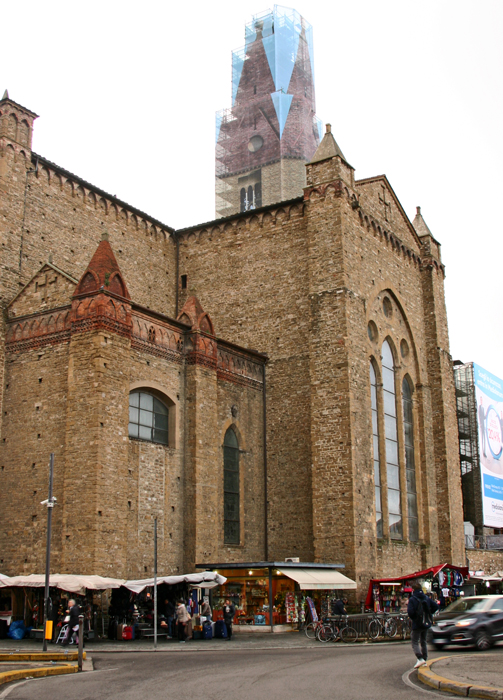 |
| One of Florence's most important churches, the Dominican church of Santa Maria Novella, was a 3 minute walk from our hotel. |
 |
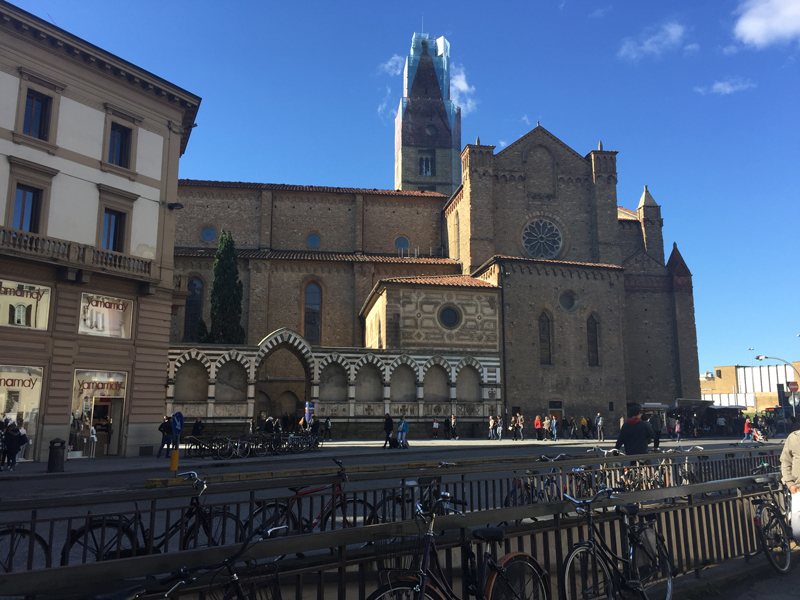 |
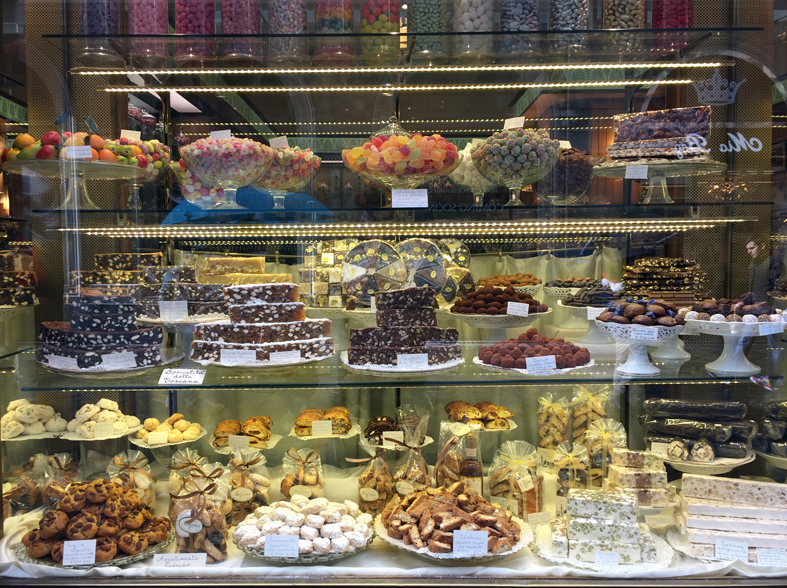 |
 |
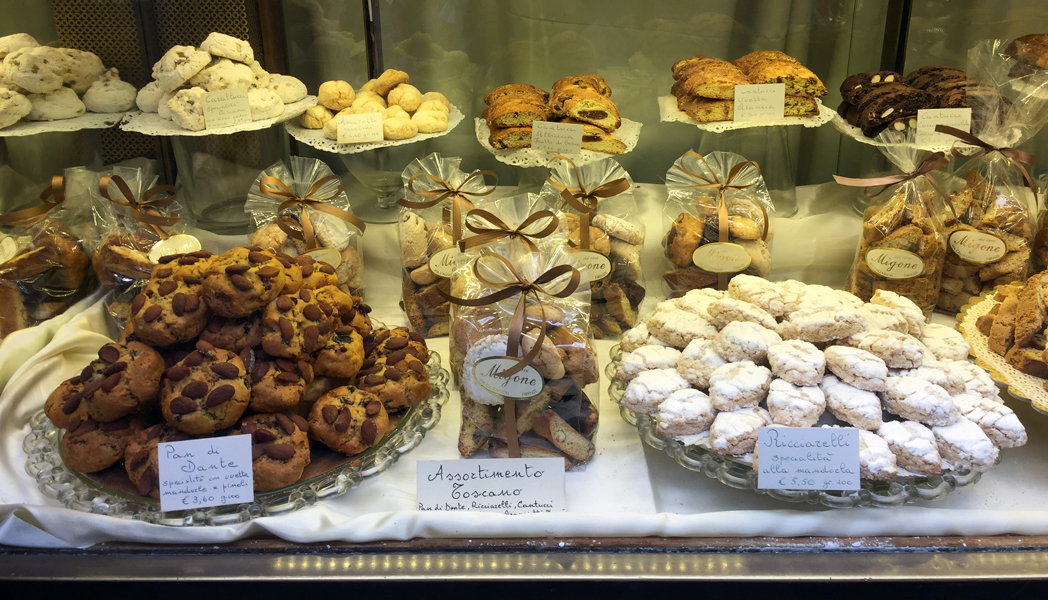 |
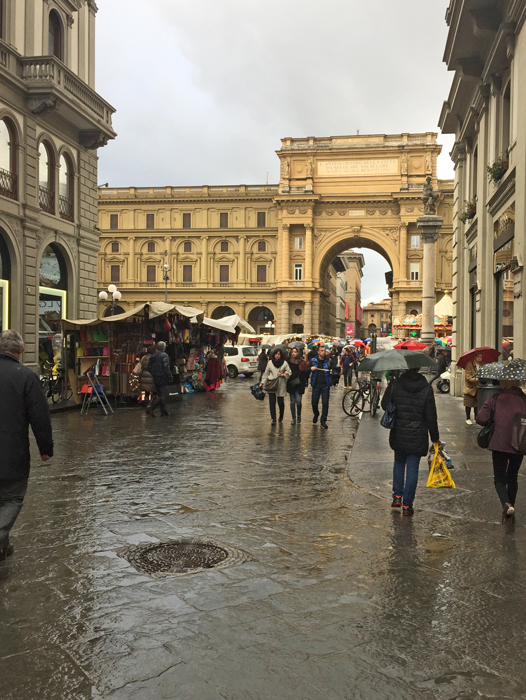 |
| Arcone Triumpal Arch at Piazza della Repubblica. |
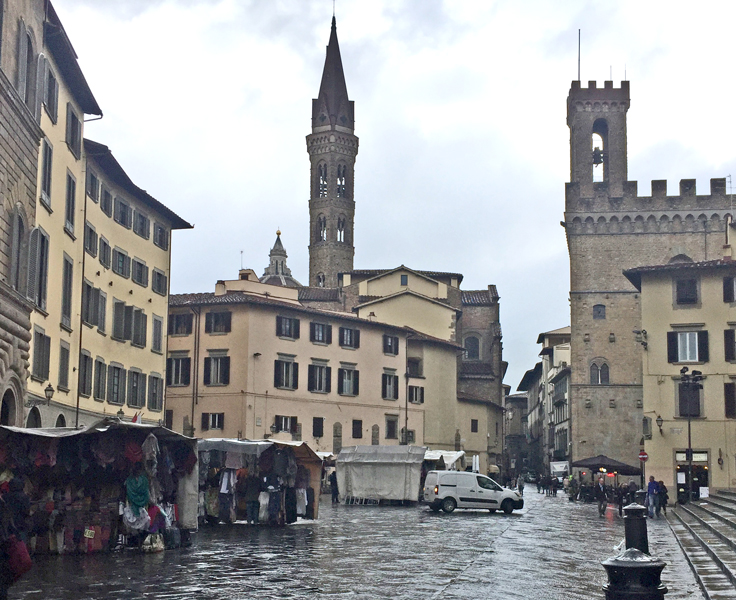 |
| Badia Fiorentina. |
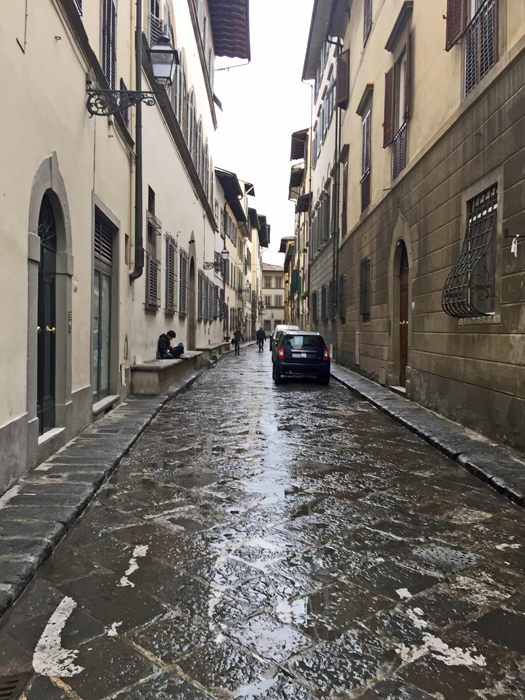 |
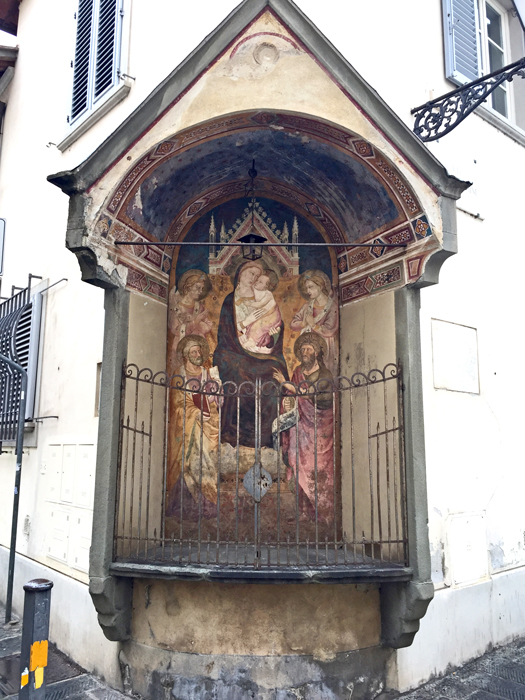 |
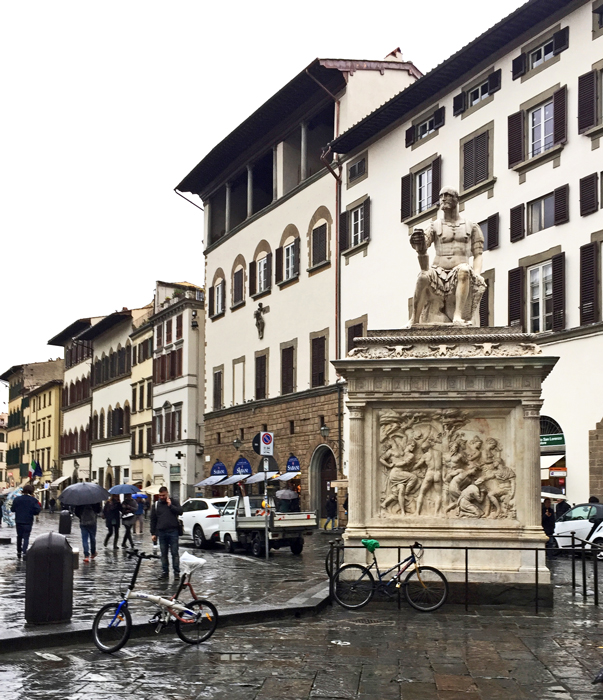 |
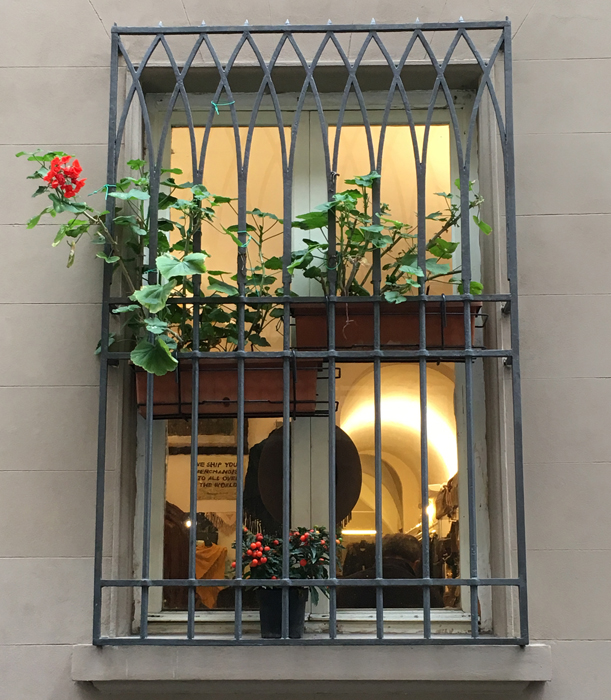 |
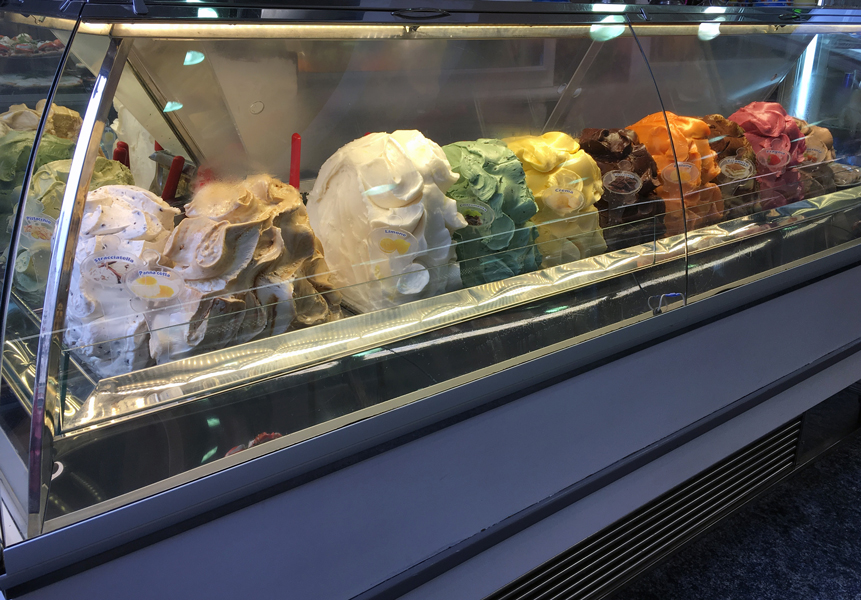 |
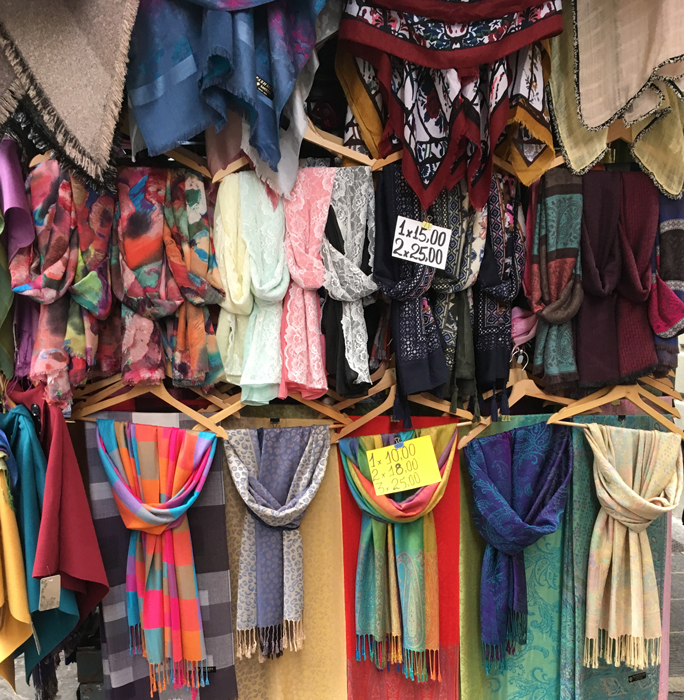 |
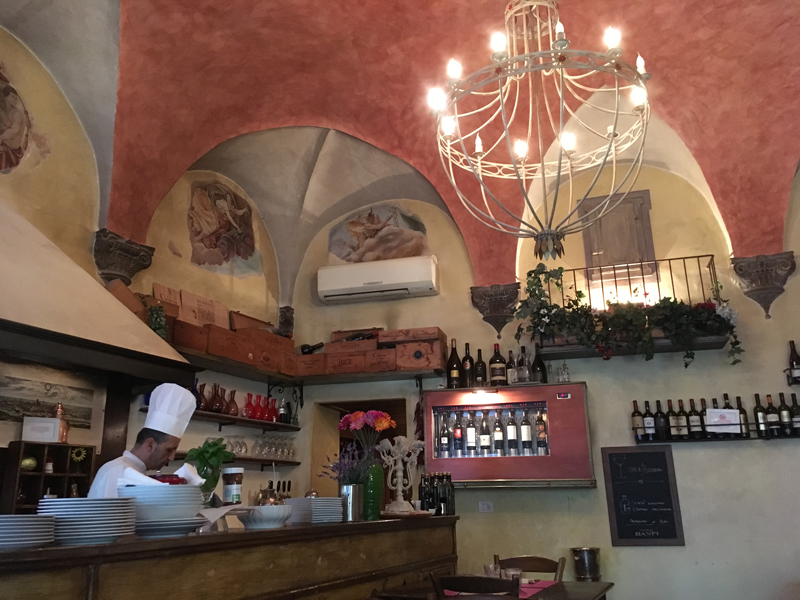 |
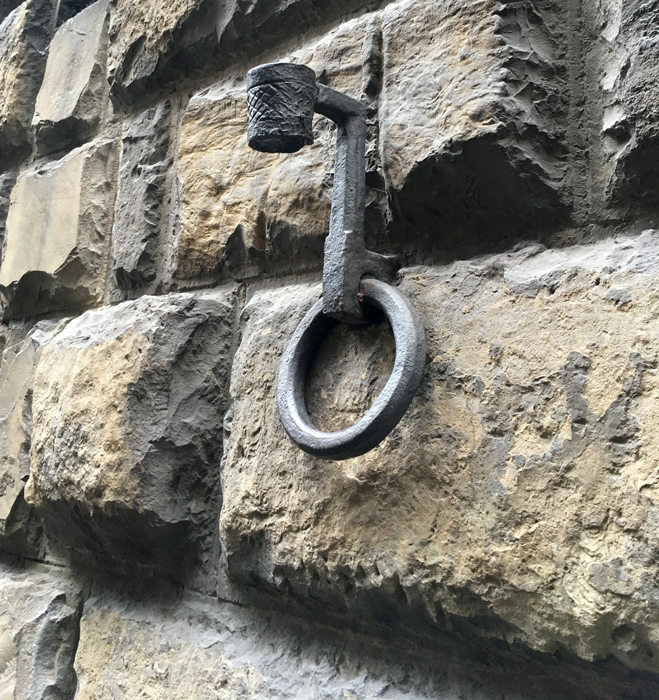 |
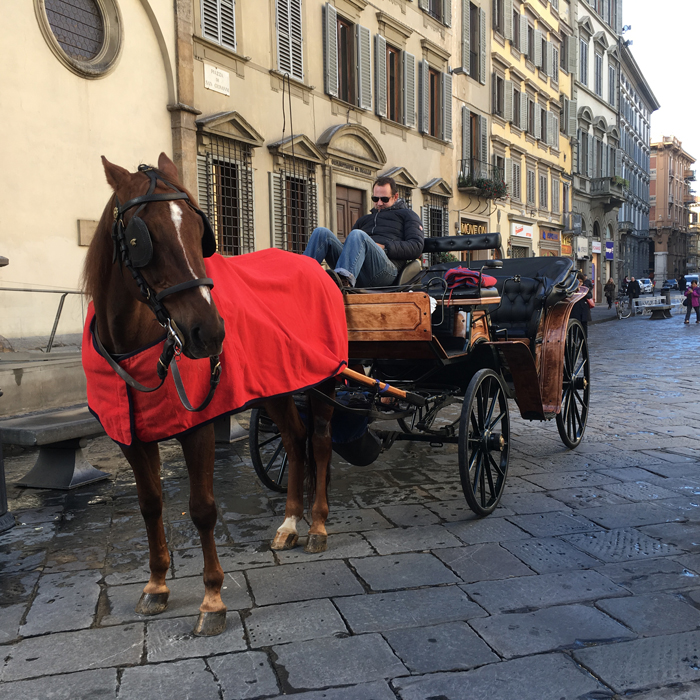 |
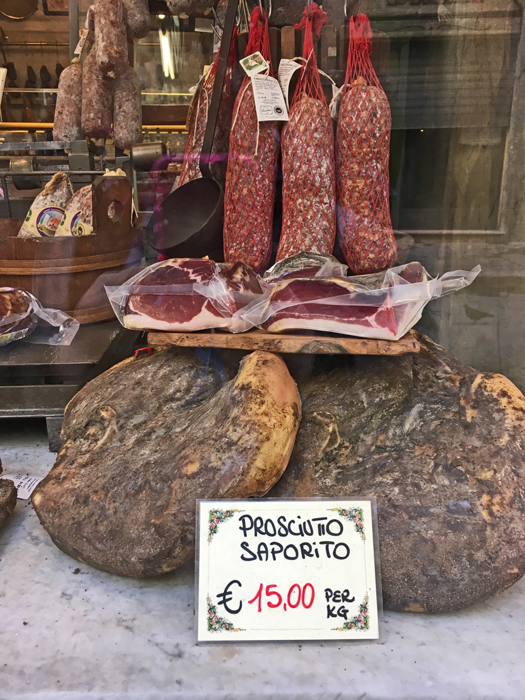 |
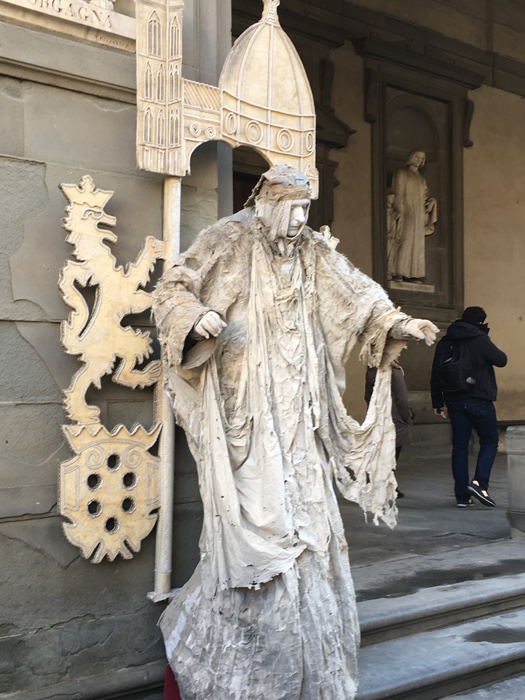 |
Wine Tasting and Visit to a Medival Village
We take a short bus ride to a Tuscan wine region, and after, spend a little
time in San Gimingano, a medival village overlooking the Tuscan valleys.
The winery was Tenuta Torciano, home of some great Chiantis and 'Super Tuscan' wines.
 |
 |
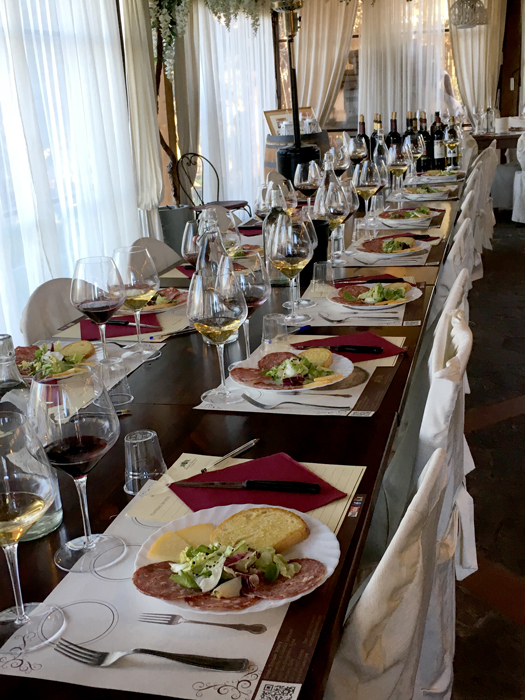 |
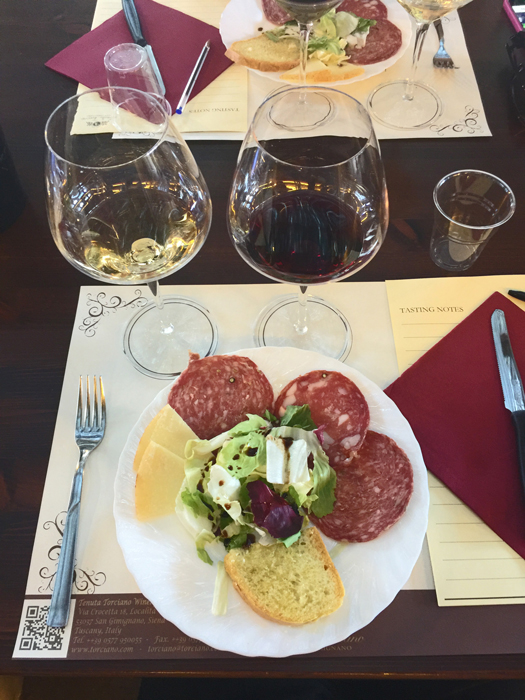 |
| Antipasti. |
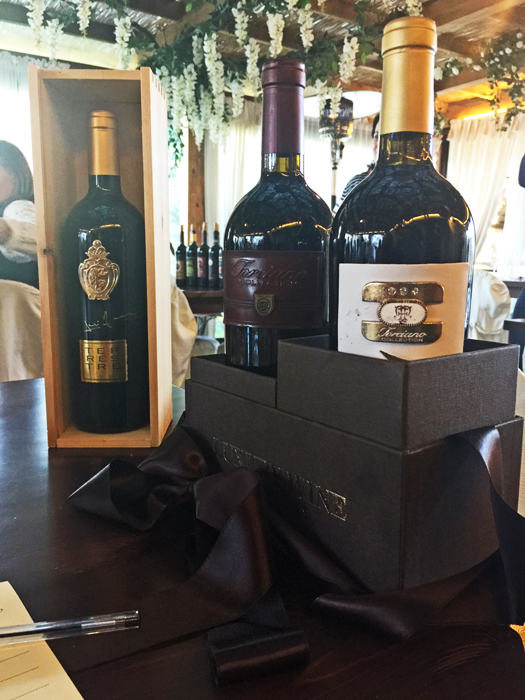 |
| 'Super Tuscans' - bottle on the left 120 euros, the two in the box, 500 euros for the pair. We didn't buy any of those! |
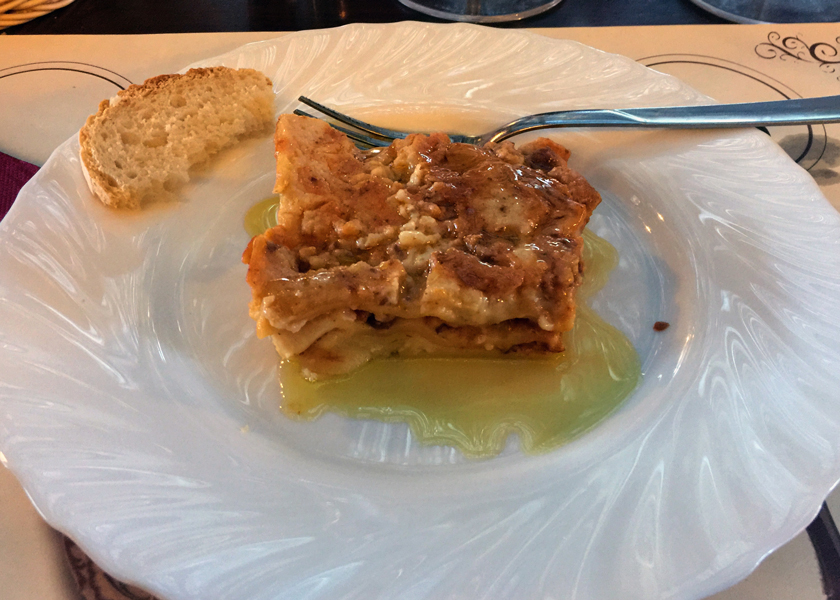 |
| Lasagna with truffle oil. Yum. |
San Gimingnano
In the 3rd century BC a small Etruscan village stood on the site of San Gimignano. Chroniclers Lupi, Coppi
and Pecori relate that during the Catiline conspiracy against the Roman Republic in the 1st century, two patrician
brothers, Muzio and Silvio, fled Rome for Valdelsa and built two castles, Mucchio and Silvia (now San Gimignano).
The name of Silvia was changed to San Gimignano in 450 AD after Bishop Geminianus, the Saint of
Modena, intervened to spare the castle from destruction by the followers of Attila the Hun.
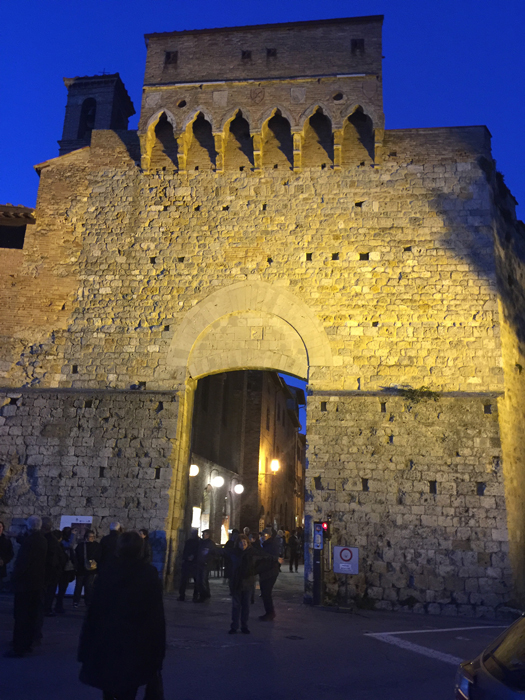 |
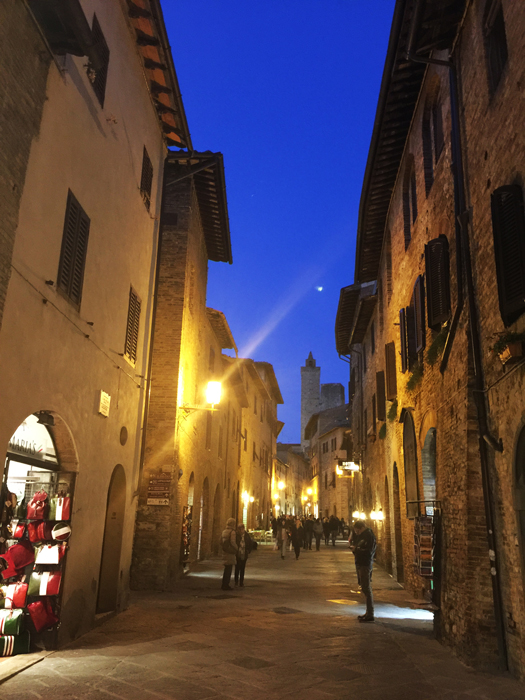 |
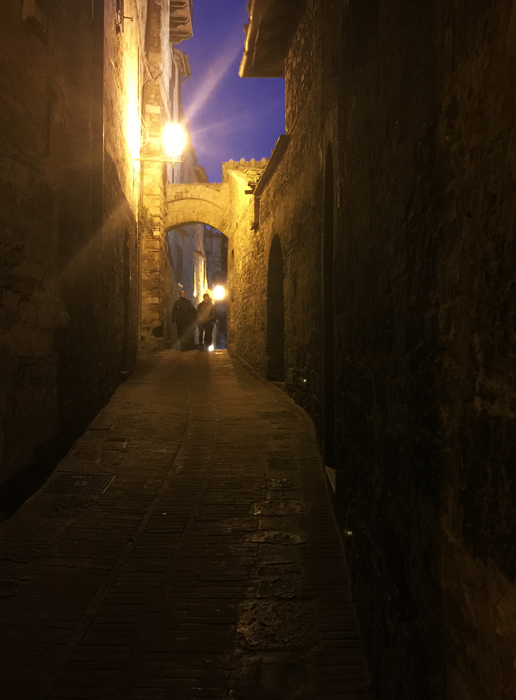 |
 |
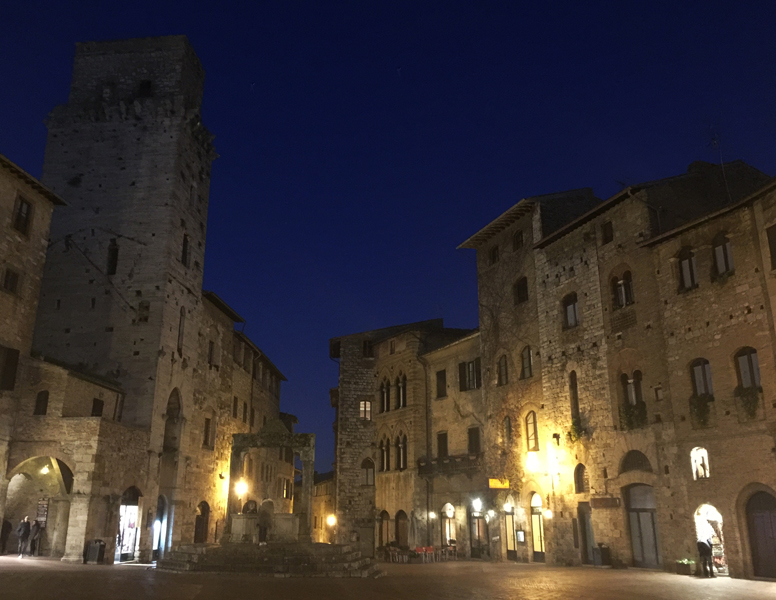 |
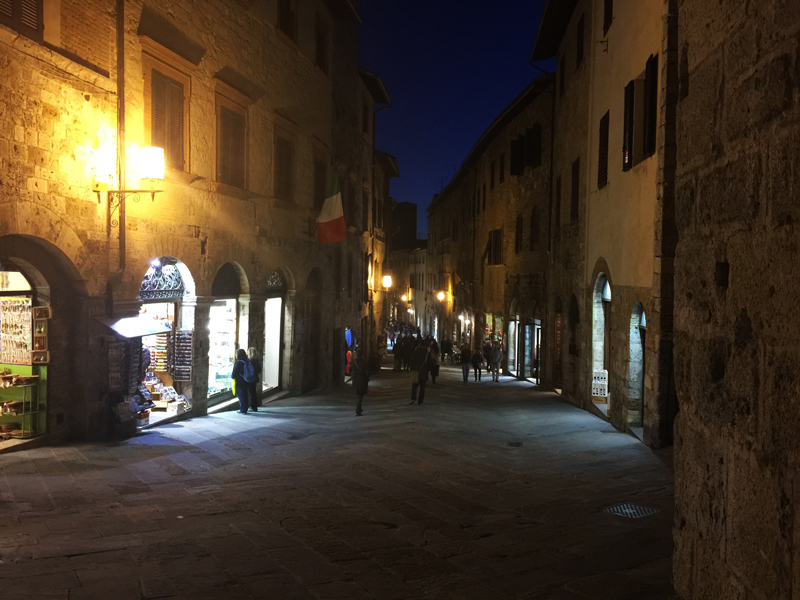 |
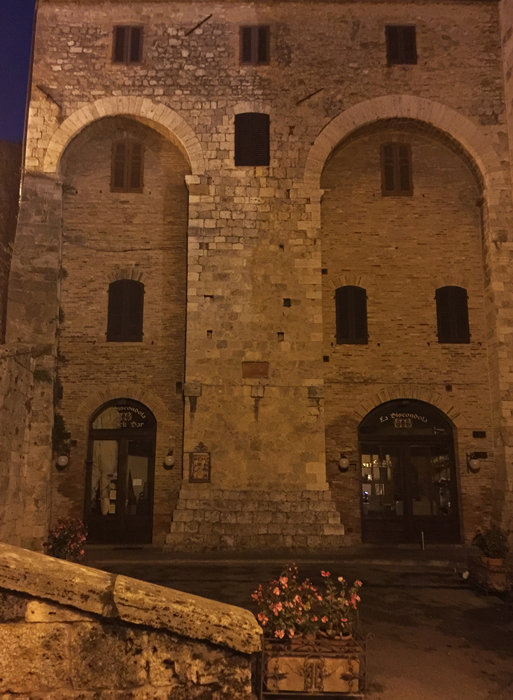 |
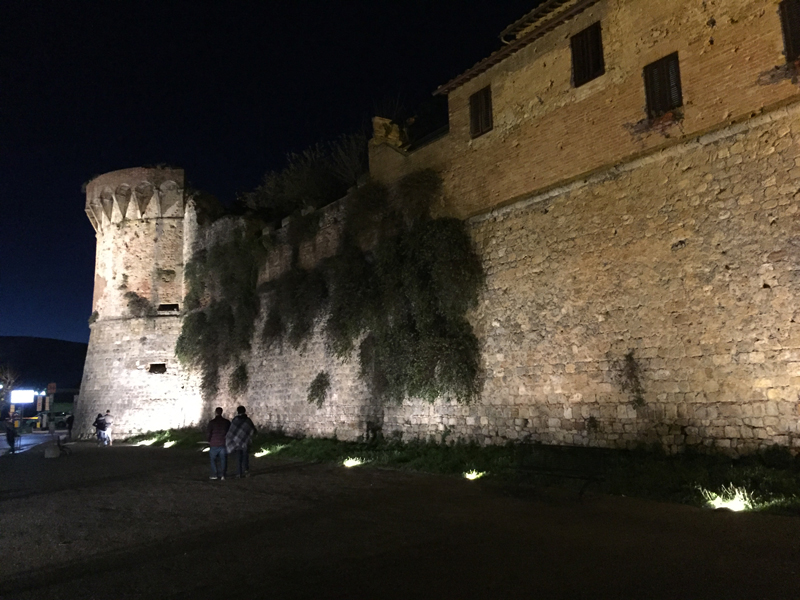 |
Back to Italy 2016 Index
Galleria dell'Accademia
Uffizi Gallery
Il Duomo